Is this the face of an ancient Amazon female warrior?
Replica shows visage of 16 year old fighter buried with her weapons and horses.
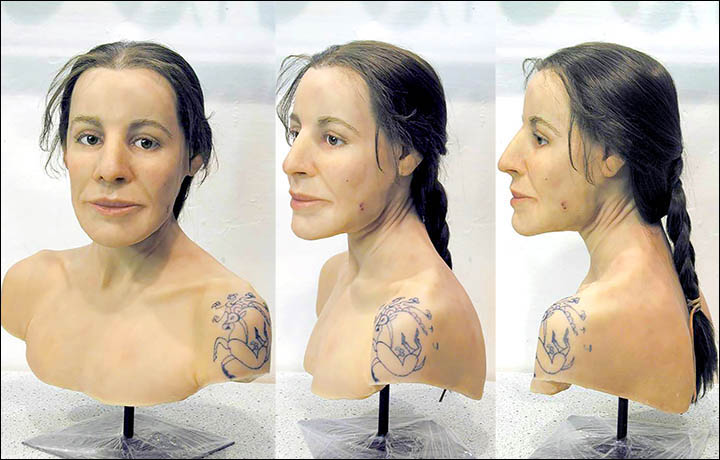
Is this the face of an ancient Amazon female warrior? Picture: Marcel Nyffenegger
Her remains - unearthed in the Altai Mountains - suggest likenesses to the fabled all-female virgin Amazon warriors of known to the Greeks. Entombed next to a much older man, she lay beside shields, battle axes, bows and arrowheads, while her physique indicated she had once been a skilled horse rider and archer.
In a singular honour, nine horses - four of them bridled - were buried with her, escorting her to the afterlife.
The renowned Siberian archaeologist, Dr Natalya Polosmak, who located her remains in 1990, speculated the teenage warrior who died around 2,500 years ago could have belonged to an elite all-female corps of warriors within the Pazyryk culture in this mountainous region of southern Siberia.
Now, the teenage fighter's face has been revealed to the world for the first time through the use of intricate taxidermy techniques by Swiss expert Marcel Nyffenegger.
Last week The Siberian Times mistakenly reported the face recreated by Mr Nyffenegger was that of the 2,500 year old tattooed 'Princess Ukok', discovered nearby by the same archeologist. We apologise for the error; in fact, as we now report, the possibility of this visage being that of a fabled female warrior is even more intriguing.
The grave of this 16 year old, adjacent to the tattooed ice maiden and known as number 1 Ak-Alakha burial, was significantly different from other elite and lower-ranking females who were entombed without weapons, and wearing women's clothes, in the same era.

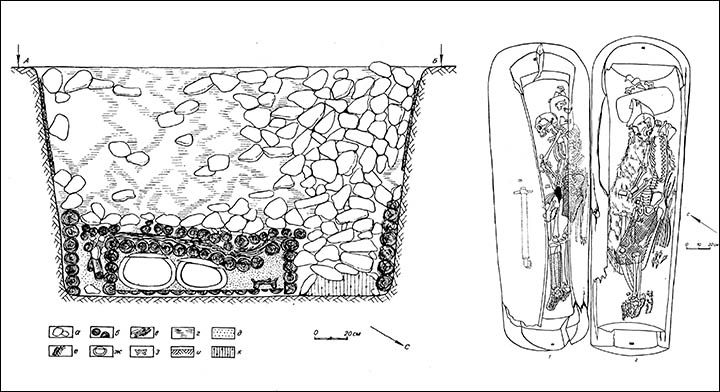
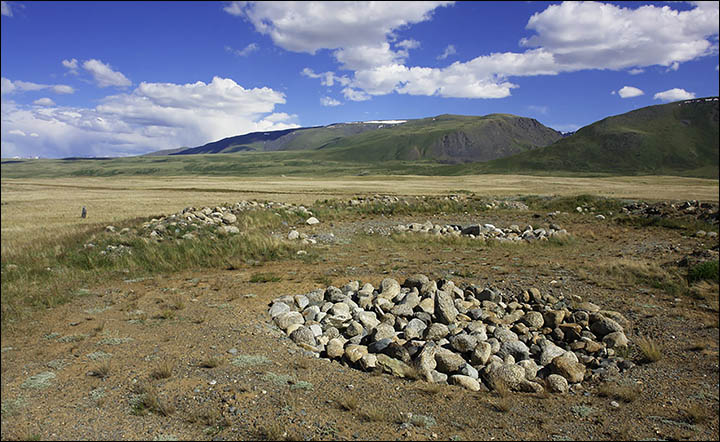
Scheme of the young lady and her male companion burials, where A stands for rocks, B - logs, C - permafrost soil, D - ice, E - horses burial, F - burial cabins, G - burial soil, H-soil, I - mainland; more detailed schemes of the burial, with the young lady on the left, and the number one Ak-Alakha burial after archeologists finished works. Pictures: Natalya Polosmak
'The burial of a woman in riding clothes, and escorted by her horses, is not totally unexpected for the time, which was known for multiple mentions of the legendary Amazons,' said Dr Polosmak, from the Institute of Archaeology and Ethnography at the Siberian Branch of the Russian Academy of Sciences.
'Perhaps the Ak-Alakha burial has discovered representatives of little known members of a Pazyryk elite, in which women - for social and economic reasons - were allowed to be more war-like'.
But she went on: 'There is another explanation of why this burial is so exceptional.'
She cited Greek physician Hippocrates - who lived approximately from 460 BC to 370 BC - and his writings about the Sarmatians, which, like the Pazyryks, were a Scythian grouping famed for their mastery of mounted warfare.
'Their women, so long as they are virgins, ride, shoot, throw the javelin while mounted, and fight with their enemies,' he wrote. 'They do not lay aside their virginity until they have killed three of their enemies, and they do not marry before they have performed the traditional sacred rites.
'A woman who takes to herself a husband no longer rides, unless she is compelled to do so by a general expedition'.
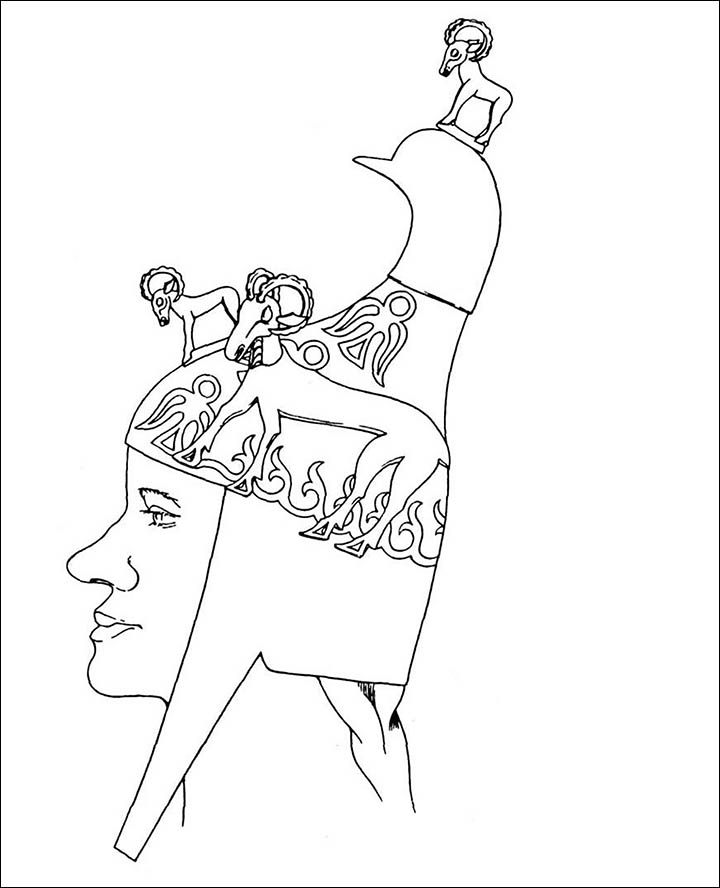
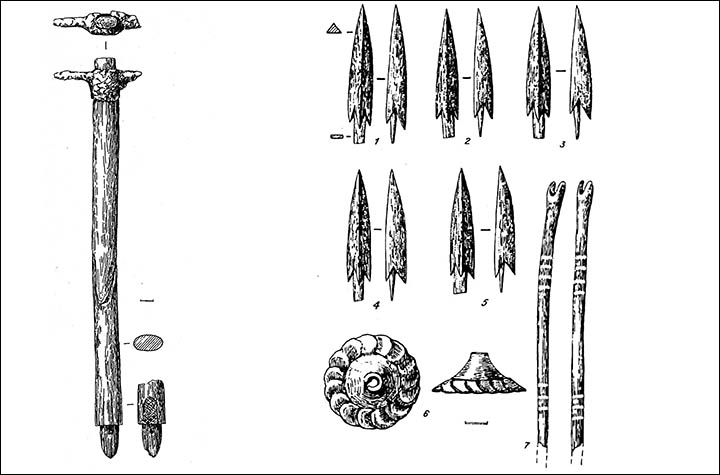
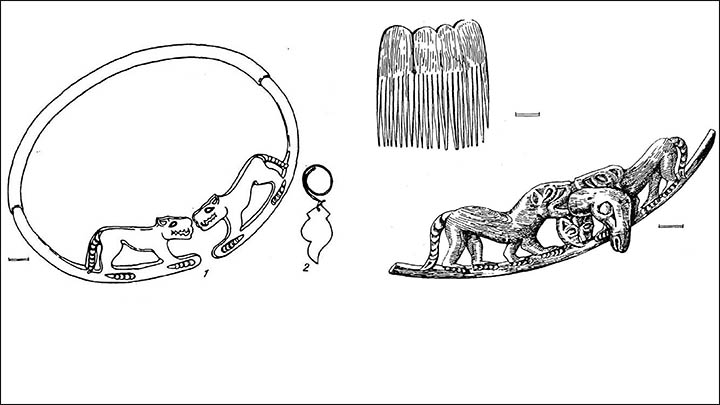
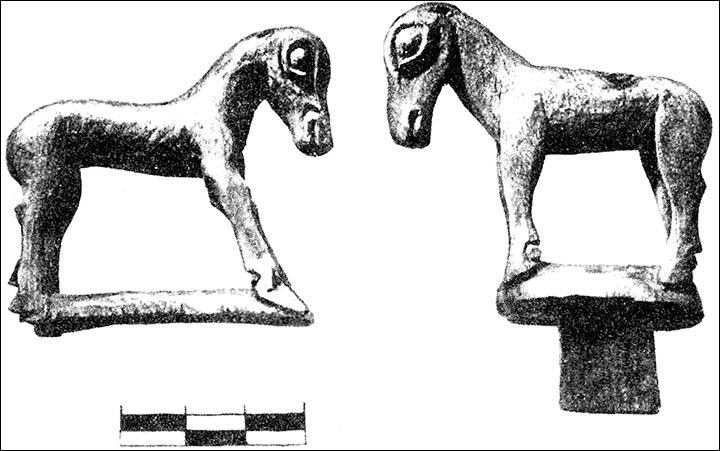
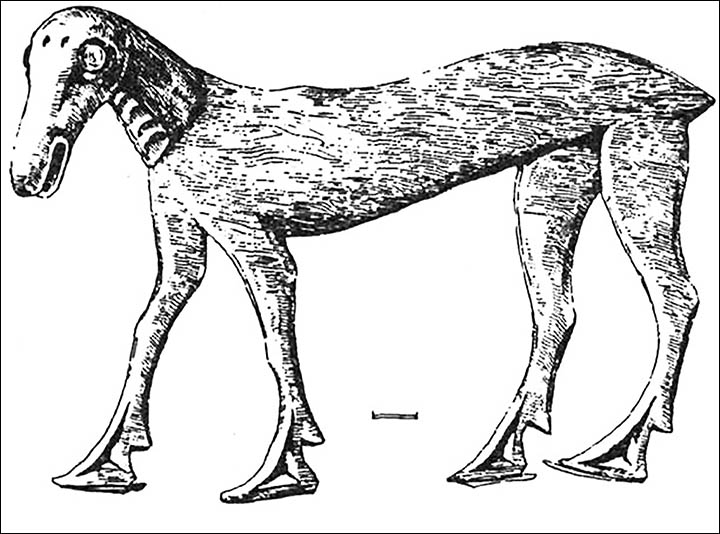
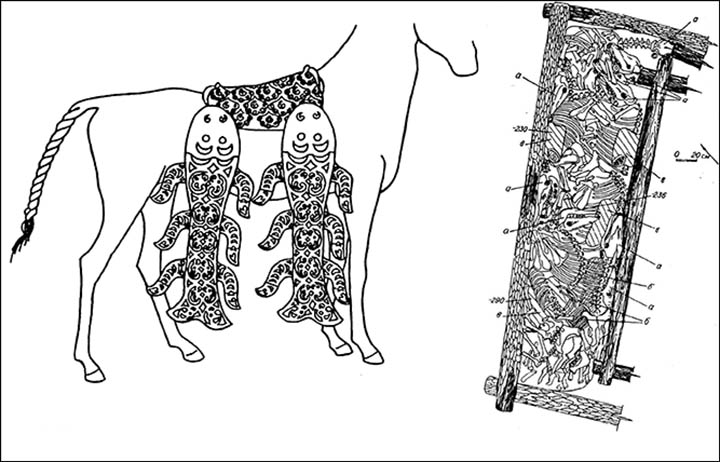
Drawing of the young lady's helmet, her chisel, arrows and arrows' shafts, drawing of her neck decoration and an earing, a comb found inside the man's grave and a man's neck decoration; wooden decorations from the young lady's helmet, a wooden reindeer from headgear, felt saddle decorations on her horses and a scheme of the horses' burial. Pictures: Natalya Polosmak
Dr Polosmak said: 'As we can see from this quote, it was only young girls that behaved in this war-like way, and it was happening for a very short period of their time.
'This is why burials of armed women are exceptionally rare, and must belong to very young women whose lives were tragically and unexpectedly interrupted.'
Dating back to Greek mythology, very little is known about such Amazon warriors, with different accounts for when they existed or even where they were found. Some say they lived on the shores of the Black Sea, in what is now Turkey, while others place them in Libya or in the border lands beside Ukraine.
In Roman history there are various accounts of Amazon raids in western Asia, and their name has become a term for female warriors in general. Notable queens of the Amazons were said to include Penthesilea, who participated in the Trojan War, and Hippolyta, whose magical girdle, given to her by her father Area, was the object of one of the labours of Hercules.
The teenage warrior was discovered in a double grave alongside a much older male in Ak-Alakha in the Altai region. Very little of her remains were still intact, unlike Princess Ukok who was preserved nearby in permafrost, but it is thought she also once had tattoos on her body.
Writing in a 1994 book, Dr Polosmak said the discovery was 'unique' because of the way the female skeleton was dressed in male clothing and buried with weapons.
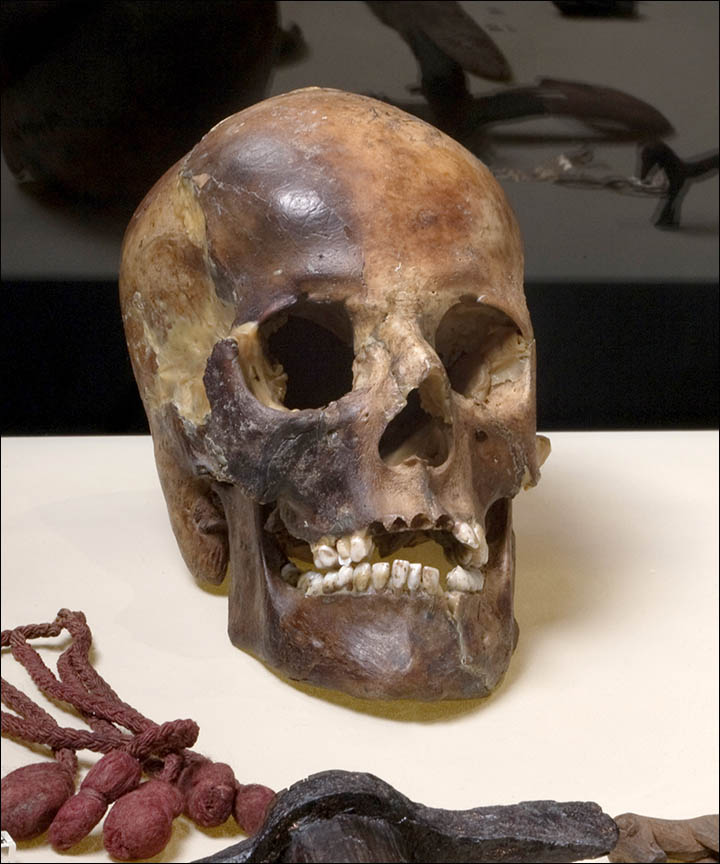
Mr Nyffenegger was asked to create a likeness of the warrior for the Historical Museum of the Palatinate in Speyer, Germany. Picture: Marcel Nyffenegger
The Novosibirsk archaeologist was the first to suggest there could be a link to Ancient Greece, though she also said the woman could have been part of a privileged society that allowed burials with armoury.
'A system of commemorative structures next to number 1 Ak-Alakha burial signified higher social status of people laid to rest there than in all other burials within the same graveyard,' she explained. 'The mound can be classified as average in size, with west to east diameter being 18 metres, and north to south - 17.5 metres; the surface of the mound was 70 cm above the modern surface. 180cm under the ground there was a larch cabin at the bottom of the pit, measuring 4x4, and 10x1 metres.
'The log cabin was made from crude logs (meaning that tree trunks had bark on) from 16 to 20 cm in diameter and had seven rows of logs. The cabin was covered from logs taken from dismantled polygonal house. None of the other known Pazyryk burials used house logs to cover burial log cabins.
'The fact of using trees from already assembled house can be interpreted as a concern for the future life in the other world, where a man and a young woman buried in the mound needed housing as they did in their earthly life.'
'There were nine horses buried with the man and the young woman.All horses were buried with harnesses and other equipment, four of the nine were bridled. Seven complete sets of harness were found in the burial.
'All of the burial chamber was filled with ice; there were two larch decks standing next to each other and next to the walls of the cabin, with lids closed.'
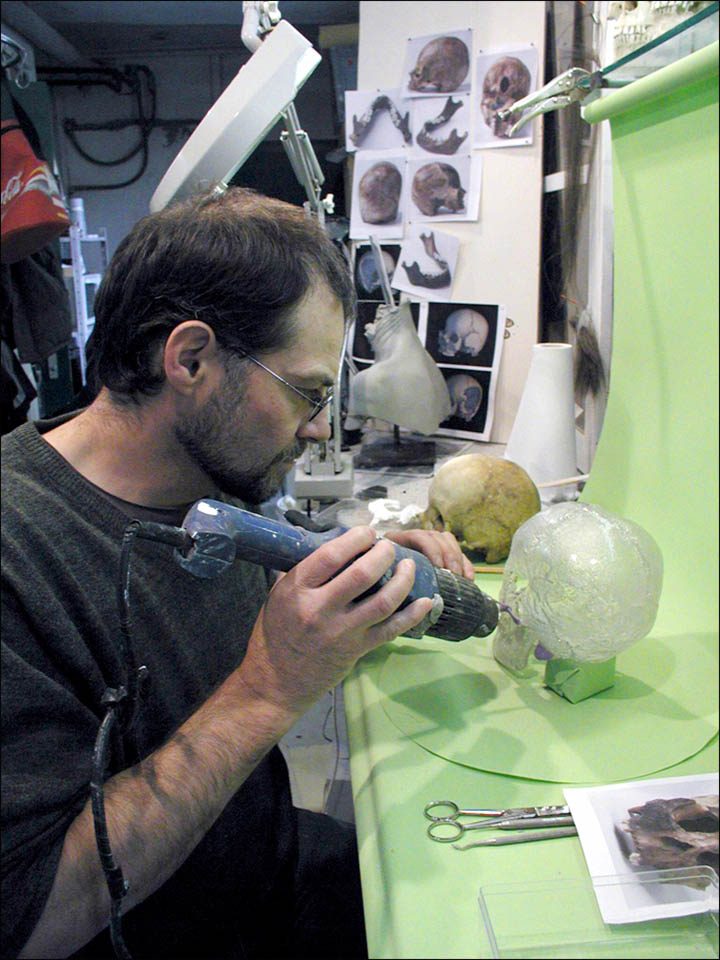
The teenage fighter's face has been revealed to the world for the first time through the use of intricate taxidermy techniques by Swiss expert Marcel Nyffenegger (pictured working). Picture: Marcel Nyffenegger
In Burial 1 was a large deck which was right next to the southern wall of the burial cabin. It was occupied by a man of Caucasian type, aged 45 to 50. In Burial 2, with a smaller deck, was the 16 year old young woman, lying on the right side of her body.
'The felt part of her headgear had not preserved, but judging by its components - like a finial in the shape of a bird, wrapped in a golden foil, reindeer and horse figurines - it was identical to the man's headgear,' she wrote. 'On the young woman's neck was a complicated adornment with its front decorated with wooden figurines of two wolves, covered in golden foil, and its back side sewn into a leather case.
'Five red strings each ending with little balls made of yarn, similar to those inside the man's burial, but smaller, were found in her chest area.
'There were 34 cowrie shells and two wooden buttons (a round and a rectangular one) found in her pelvis area. There was an iron chisel with a wooden handle found lying along the bones of her right leg. Around the belt area was a bronze mirror inside leather case with a loop, and a leather handbag.
'On the right thigh was an iron dagger in an extremely badly preserved wooden sheath, with remnants of leather belts. Along her left thigh was the wooden base of a quiver, with engraved scenes of leopards tormenting boars. Next to it were found seven bone arrowheads, staffs and parts of a composite bow.
'The young woman was dressed in trousers made from coarse red fabric. Remains of the fabric were found in her pelvis area and around her leg bones. Two wooden buckles, covered in golden foil were found around her belt area, along with a round ironwork decorated with gold.
'Fragments of fur and felt clothes and shoes were also found in her burial. Weapon items included a bow, arrows, wooden parts of quivers, daggers, (and) battle axes'.

Fragments of the male (1) and the female belts. Picture: Natalya Polosmak
She said: 'The young woman's belt looks simpler than the one found on the man's remains, but we should take into account that never before were such types of belt - with wooden decoration attached to them - found in female burials. They were believed to be part of male costumes only, so this find is truly unique.
'Just as unique for the Pazyryk culture is the burial of the young woman, dressed in male clothes and very well armed. The so-called Royal burials had women dressed in very rich but female clothes and without weapons.'
Mr Nyffenegger was asked to create a likeness of the warrior for the Historical Museum of the Palatinate in Speyer, Germany. Working with a 3D model of the skull, he spent a month painstakingly piecing together her facial muscles and tissue layers as well as reconstructing her skin structure, eyes and expression.
The resulting Plasticine model was then covered with silicone and a rubber-resin mixture before finer details such as eyebrows and eyelashes were added.
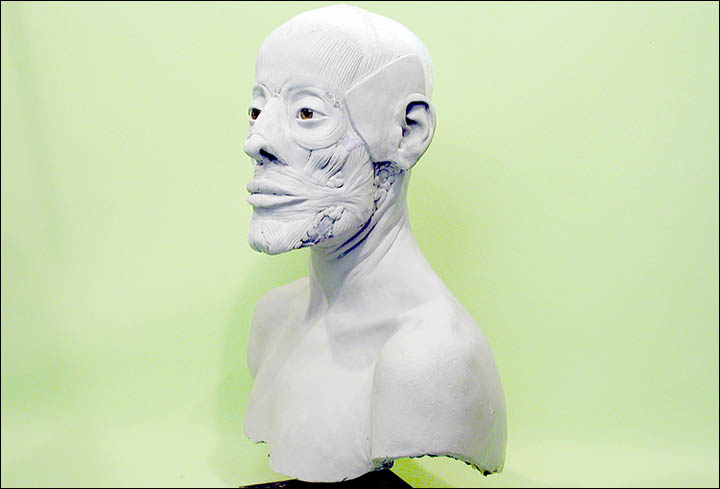
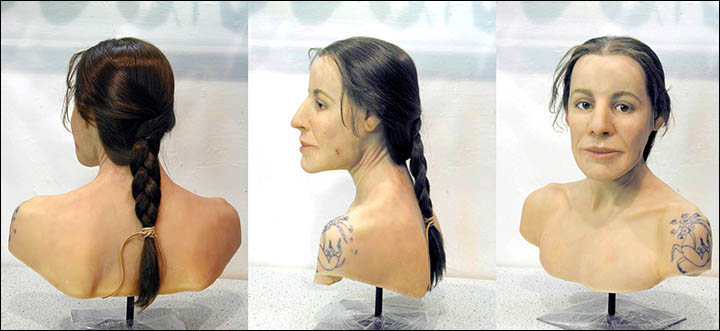
The Swiss expert said he believes the face is very accurate to how the woman actually looked. Pictures: Marcel Nyffenegger
More than 100,000 individual strands of hair were used to give the warrior her flocking locks, a process that in itself took two whole weeks.
'That two weeks took me to the brink of insanity,' the expert confessed. 'I didn't spend more than two or three hours a day on that part because it was very boring and neck pain literally forced me to do something else.'
The Swiss expert, from the city of Schaffhausen, said he believes the face is very accurate to how the woman actually looked.
He said: 'With such a soft tissue reconstruction, purely based on the bone structure, we have achieved an accuracy of 75 per cent of the former appearance of the woman. The remaining 25 per cent was our interpretation since, for example, we were missing parts of the nasal bone and thus an accurate reconstruction was not possible.
'The skull itself shows where the muscles were located and which form and thickness they had and shows the points at which the skin lied directly on the bone'.
1 comment:
Fascinating!!! Truly grateful for the knowledge that the author has shared with us! Thank you
Post a Comment